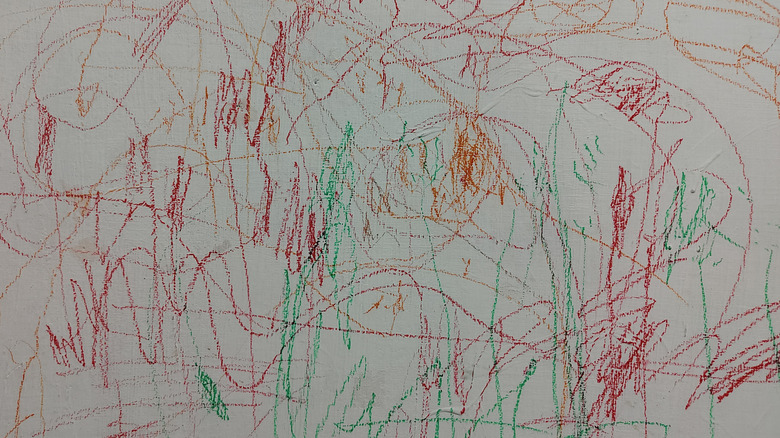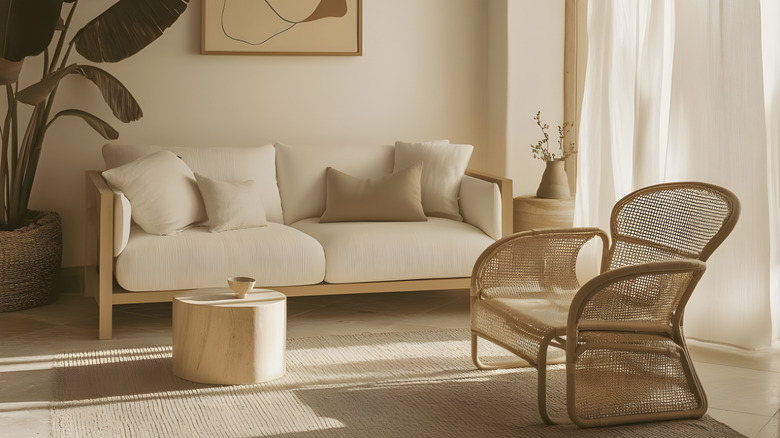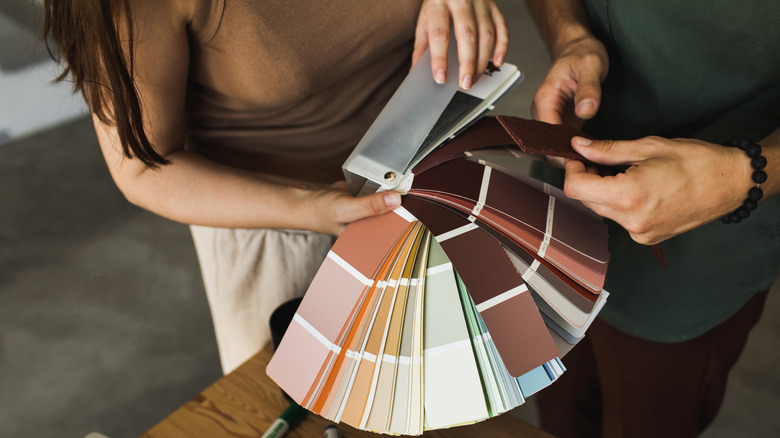The Best Paint Colors To Mask Wear And Tear In Your Home
While magazines and home design websites may present photos of perfectly maintained interior spaces, it is completely normal to have areas in your place that look a little worse for wear — particularly the walls of your home. Handprints, scuffs, scratches from pets, and other abuse can all leave your interior walls presenting a shabby visual, but there's no reason that you have to be content with them looking this way; choosing the right paint colors can help you mask wear and tear throughout your home.
Before choosing the exact colors to paint your walls, it's good to understand the principles behind what makes a color best for concealing imperfections. It probably comes as no surprise that choosing very light colors does you no favors when attempting to hide marks and stains commonly found in homes: Wayward crayons that have left marks upon the wall, bits of food that have splattered in the dining room, and mud from your furry friend's wagging tail readily show up on white or other similarly light shades. If you choose too dark of a color, however, you risk making your room feel small and dingy. The key? Choosing the correct moderately muted colors, namely light beiges, blues, greens, and creamy whites.
Winning shades to choose from
Now that you know the principles for selecting the best concealing paint shades, you can delve deeper into what specific colors work best in your space. Manchester Tan by Benjamin Moore offers a bright beige shade that doesn't weigh down the look of your room. Fortunately, this beige paint is also dark enough to conceal light wear and tear that it may experience on a regular basis — such as handprints — making it a good choice for entryways and foyers. Green Onyx by Sherwin Williams is a soft yet luxurious shade of sage green prized for its ability to cover up stains and scuffs while still lending a degree of allure to your space. Given its beautiful and sophisticated shade, this paint makes a great option for dining spaces.
Santorini Blue from Benjamin Moore, which is a beautiful grayish-blue, does a fabulous job at hiding scuffs, marks, and smudges that your walls may suffer. Its relaxed shade makes it a good choice for bedrooms or living rooms. Finally, if you want a shade of white that isn't overly susceptible to stains and marks, you can find those qualities in Creamy by Sherwin-Williams. This white is bright enough to keep any space looking light while the yellow notes make it less harsh than a plain white; best of all, it doesn't accentuate marks from everyday life. While you're selecting good colors to hide the wear and tear on your walls, use these tips to create a cohesive color palette for your home.
Additional tips to make your colors count
Beyond working with the aforementioned colors, it's also wise to select a good quality paint, budget permitting. Should you choose a lesser-quality or cheaper paint, it may not cover your walls evenly or stand up to the toll that regular exposure to sunlight can take on it. Regal Select interior paint by Benjamin Moore is known for being easy to clean and very durable. If you prefer Sherwin-Williams, its Scuff Tuff interior water-based enamel is specially designed to deal with all that life throws at it. After snagging easy-to-clean paint finishes, avoid the five mistakes everyone makes when cleaning painted walls.
Selecting the correct paint and primer helps ensure even coverage, as well as better performance in the long run. Remember when painting your space to buy the appropriate finish for your paint too, or you risk it not standing up to periodic wiping and scrubbing if the surface gets especially grimey. Selecting a glossier finish makes it more durable to cleaning, but avoid choosing too glossy a paint since it can actually accentuate the wear and tear on your walls. If your top priority is being able to keep your walls clean, familiarize yourself with the expert-approved paint finishes that are easiest to keep clean.


